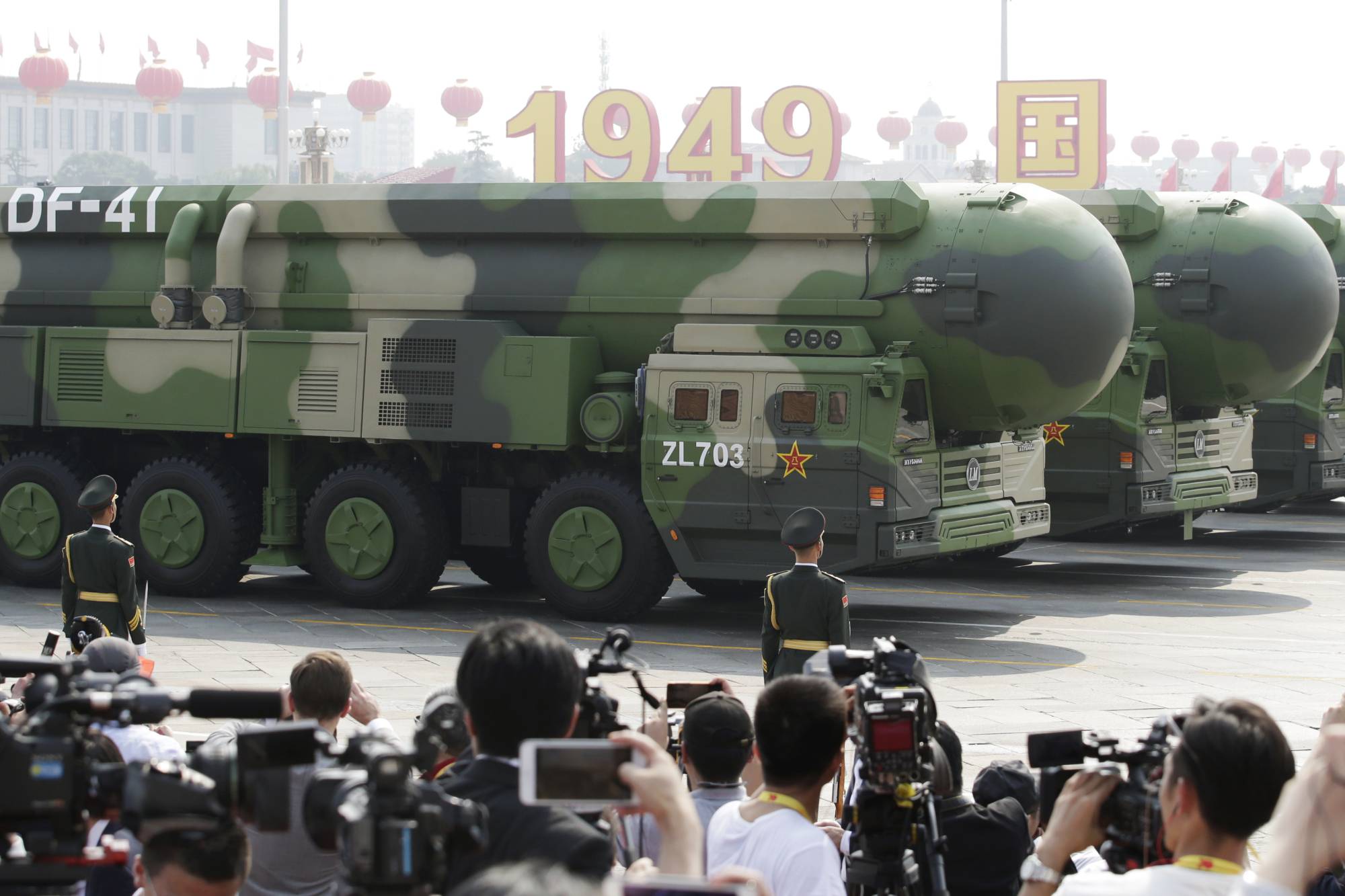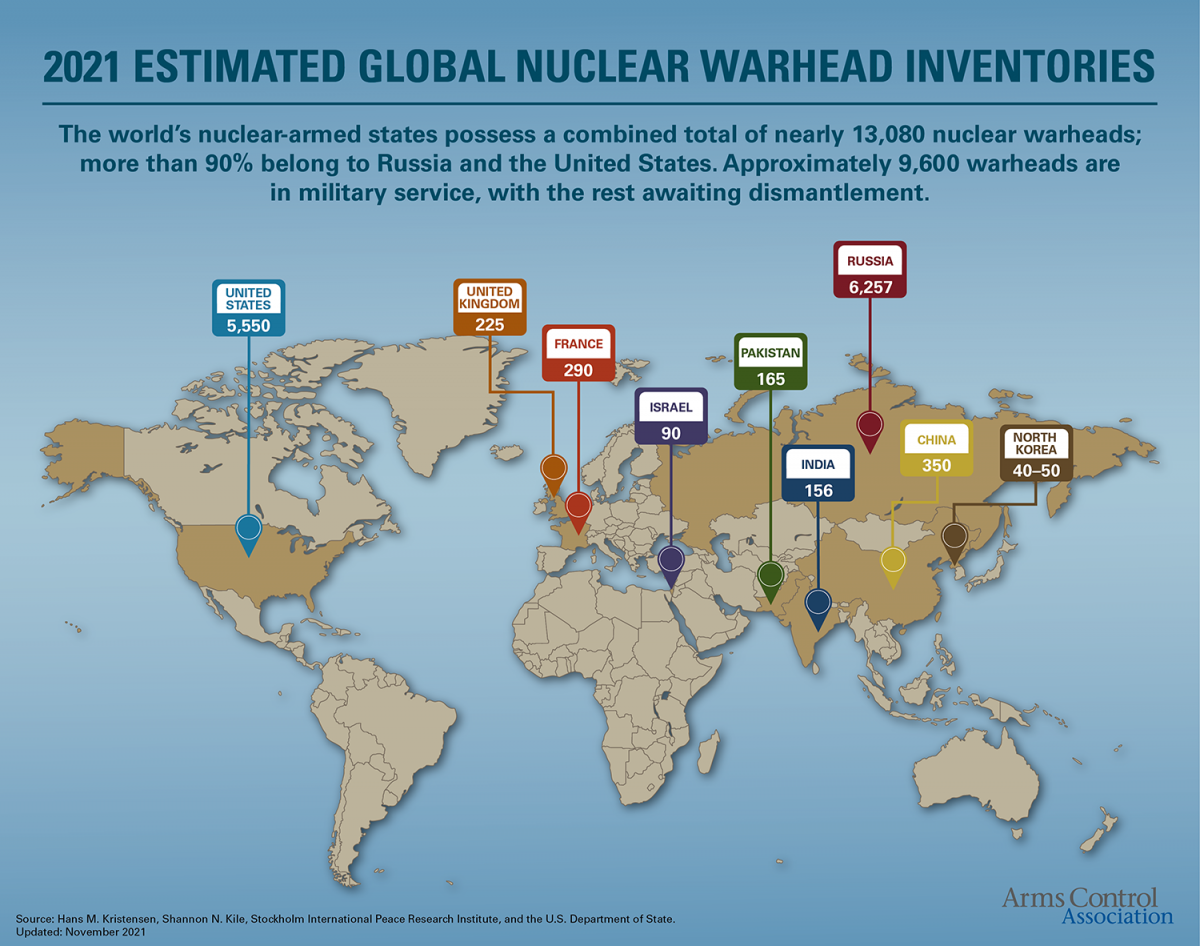Taiwan Nuclear Program - As discussions about U.S. policy toward Taiwan intensify in the new Biden administration, the nuclear issue should be at the center of the debate. Several proposals have been made for and against the concept of strategic ambiguity, and this is an important discussion. But while nuclear stability between China and the United States is at the forefront of the discourse, there is no central question of whether and how the United States should defend Taiwan.
About 100 miles from mainland China, Taiwan is susceptible to Chinese incursions across the "median line" that forms the two Taiwan Straits. A disputed island and a large US military presence are also nearby.
Taiwan Nuclear Program

Since 1954, the United States and the Republic of China (ROC), informally known as Taiwan, have had a mutual defense treaty that provides for the US to defend the ROC. US-based forces on the island, including nuclear weapons,
Nuclear Notebook: How Many Nuclear Weapons Does The United States Have In 2022?
At various points in support of this commitment, which was abrogated in 1979 in honor of the normalization of diplomatic relations between the United States and the People's Republic of China (PRC).
In place of the agreement, Congress passed the Taiwan Relations Act (TRA) which required the United States to a) equip Taiwan with the means to defend itself and b) aim to offend the United States. "Maintaining the ability" was required to resist the efforts made with it. Taiwanese security and freedom.
However, the TRA does not specifically state that the United States must exercise that "capacity" if Taiwan is actually threatened with aggression or to formally bring the island under the direct rule of the PRC. Designed for Subsequent US administrations have left the answer ambiguous, though some have come closer to direct support than others.
Collectively, the unofficial policy of declaring how the United States would respond in the event of a direct threat from the mainland against Taiwan is known as strategic ambiguity.
Reunification” With Taiwan Through Force Would Be A Pyrrhic Victory For China
For four decades, strategic ambiguity was maintained by China's inability to threaten Taiwan with aggression. Even today, the challenges involved in an amphibious assault across the 100-mile Taiwan Strait are formidable.
Despite its impressive naval buildup, amphibious warfare remains a weak point for China. A 2020 assessment by the Department of Defense (DoD) found that China is not currently investing in the amphibious capabilities needed for major beach landings.
China has other ways to pressure Taiwan indirectly through force, he said, including air and missile power that can carry out strategic bombing and naval forces that can try to blockade the island. .

And China's ability to fight in its maritime waters has grown exponentially over the past quarter century, creating challenges for the U.S. Navy even outside the specific context of the Taiwan crisis.
The Nuclear Posture Review And Russian 'de Escalation:' A Dangerous Solution To A Nonexistent Problem
In general, as China's conventional capabilities continue to mature, the possibility of direct action against Taiwan will become more real. This, in turn, has forced a renewed debate on strategic ambiguity, with some commentators calling for greater fidelity to the issue—that is, "strategic clarity"—as a way of clarifying American intentions, ideally And to prevent China from military action. The broad policy argues not for unequivocal US support for Taiwan independence, but for unequivocal rejection of China's attempts to resolve the issue by force.
(Whether such an announcement might prompt Beijing to act or embolden Taipei is another side of the argument.)
As well as a renewed debate about strategic ambiguity, the Defense Department has designated China as a "pacing threat" to US military services in programs and training.
In other words, China's capabilities are now a threat the service must deal with. America's ability to ensure freedom of navigation in Asia's littoral waters (ie, the South and East China Seas and the Yellow Sea) has been an important element in the operational concept for all four services. Some analysts have said that defending Taiwan should be the clear guiding vision for US force planning and strategy.
Arm Taiwan To Deter China—but Skip The Nuclear Weapons
The prospect of a covert training mission by Marine Corps special forces in Taiwan during the 2020s adds weight to the public debate.
Although important in the debate over strategic ambiguity and defense planning for Taiwan-related scenarios, the nuclear issue has not received consistent attention.
Indeed, while nuclear considerations are central to discussions of potential conflict between the United States and Russia, they are entirely absent from the same examination of the US-China conflict. As will be discussed below, the US has more strategic forces than China, but this does not mean that either side cannot use nuclear weapons in the event of open conflict, especially in Taiwan.

Despite its growing geopolitical influence, China's nuclear arsenal is relatively small. Most Americans would be surprised to learn that China has the fourth largest nuclear power in the world. China's operational weapons stockpile is estimated to be in the "low 200s", equivalent to around 215 British warheads and less than France, now the third largest nuclear power with around 290 warheads.
Pentagon Report Warns Of China's Plans For Taiwan, Nuclear Buildup
The Defense Department expects China's nuclear force to more than double over the next decade, but even at 500 warheads, China will fall far short of the U.S. arsenal, which has 1,750 operational warheads, and another 2,050 in reserve.
China has maintained a policy of "no first use" (NFU) since the beginning of its nuclear capability, meaning that it will not be a party to a nuclear conflict. Unlike the Soviet Union, whose NFU policy was largely seen as propaganda, China's commitment to the NFU stance seems more genuine, at least as a starting point for understanding Chinese thinking on nuclear power.
That said, much of China's nuclear doctrine and decision-making remains unclear, with final authority left to the Central Military Committee of the Chinese Communist Party (CCP), which includes, most importantly, President Xi Jinping.
The question of whether and when to use nuclear power—as in all nuclear states—is ultimately shaped by ease, a factor of personal judgment and the disposition of those who may control the release of weapons.
Covert Action: China Could Push Taiwan Into Nuclear Defense
Moreover, China's military community has something to write home about whether the NFU policy should ultimately be abandoned, especially if China's vital national interests are at risk of conventional attack.
This at least suggests a future warfare role for strategic nuclear weapons beyond strategic countermeasures. Western analysts also note that Chinese officials have privately insisted that a conventional strike against China's strategic forces would allow the first use of residual nuclear forces.
A Department of Defense assessment argues that increasing deterrence and second-strike capabilities focus on expanding China's nuclear arsenal and developing new delivery systems.

These will include more advanced land-based mobile missile launchers and, eventually, more powerful sea-based interceptors to replace existing missiles.
The Dual Nature Of China's Nuclear Modernization
Leaving aside the limitations of the current maritime cause, it must be emphasized that China can still inflict significant punishment on the US with land-based weapons. China has two types of intercontinental ballistic missiles (ICBMs) capable of striking the nearby United States – the older, silo-based DF-5 and the newer DF-31A and DF-31AG. A second road-mobile ICBM - the DF-41 - is also in the early stages of deployment but is not yet believed to be operational.
The DF-5 can be deployed in at least 48 states, including major cities on the East Coast, while the DF-31 variant can be deployed in high-risk cities in the Northwest and Upper Midwest.
Once deployed, the DF-41's range will drop anywhere, with the ability to target the American Northeast and the western half of the country.
The DF-41 is believed to have the capability to carry multiple re-entry vehicles (MIRVs), meaning that a single missile can carry multiple warheads or, a combination of warheads and decoys to help defeat US missile defense interceptors. the combination
Nuclear Weapons: Who Has What At A Glance
More than half the force has DF-5s (DF-5B variant) also MIRV-capable for five warheads.
China provided approximately 36 DF-31As and another 36 DF-AGs; Their off-road mobility makes them very difficult to target, especially in mountainous areas.
And the planned deployment of the DF-41 (expected next year) will increase the overall survivability of China's strategic forces, adding additional MIRV-capable delivery vehicles. China also has a number of medium- and medium-range missiles that can target US allies (such as Japan) and US territories in the Pacific such as Guam.

In a nuclear war with the United States, China cannot hope to match the United States' arsenal as the Soviet Union did (and Russia still does). However, China will rely on its calculation that its ability to target at least some US cities will make a nuclear exchange impossible for Washington. Indeed, is the United States prepared to defend Taiwan if there is a legitimate possibility of nuclear war, even a possible "victory"? Maintaining Taiwan's sovereignty would cost a direct nuclear attack on, for example, Anchorage, Honolulu, Los Angeles, and even Seattle.
Taiwan's Former Nuclear Weapons Program: Nuclear Weapons On Demand: Albright, David, Stricker, Andrea: 9781727337334: Books
Taiwan scholarship program, taiwan, ocac taiwan summer program, taiwan international internship program, taiwan summer program, taiwan tv program, taiwan international graduate program, taiwan university chinese language program, taiwan submarine program, taiwan chinese language program, taiwan volunteer summer program, taiwan experience education program

0 Comments